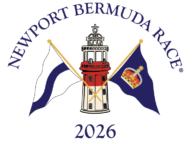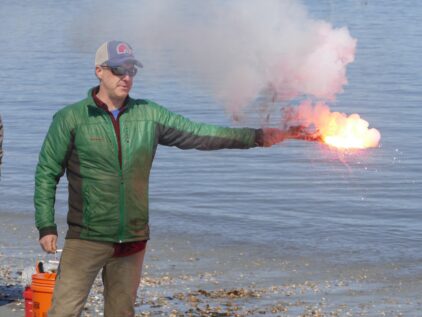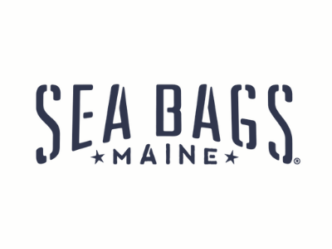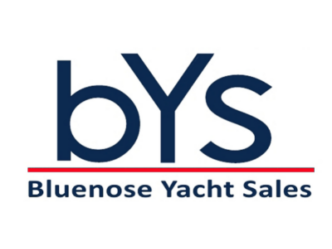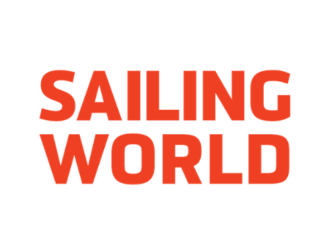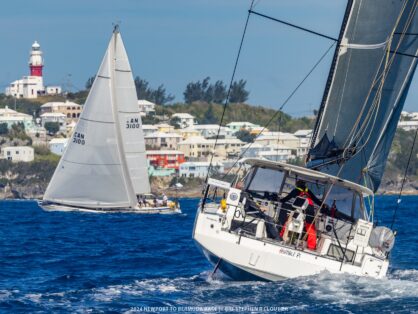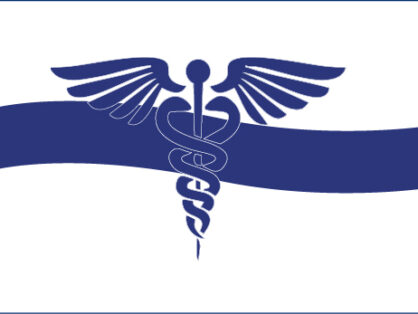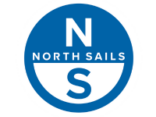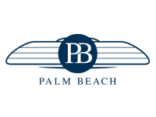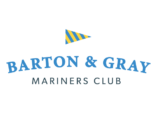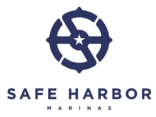"Was I ready for all this?" asks Chris Museler in his account of a busy "gut check" of a day at a hands-on safety at sea seminar. This is the first of a series of articles on preparing for the race. Chris will sail his fourth Newport Bermuda Race in Simon Says, an Andrews 68 owned by Lorenzo Vascotto and entered by Oakcliff Sailing.

I don’t know why I get apprehensive before a seminar of any kind. On April 16, when I walked into the atrium of the State University of New York Maritime College’s waterfront center (in the Bronx, New York City) and saw several hundred colorful duffle bags that other participants had stacked along a long wall, I couldn’t help but worry about what might come that day. Here I was about to take one of the hands-on US Sailing-certified Safety at Sea Seminars, this one organized by the Storm Trysail Foundation.
Sure enough, the day was full of surprises. First came person-in-the-water (PIW) training. My group of 30 sailors donned full foul weather gear and inflatable PFDs/safety harnesses, dove into a swimming pool, and labored our waterlogged selves toward life rafts. After my PFD didn’t inflate, I realized I’d forgotten to replace the CO2 canister I’d removed for a flight last year. Had this been cold ocean water, my negligence could very well have cost me my life.
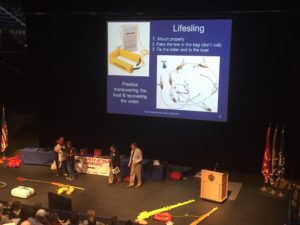
The seminar was an eye-opener for me and the diverse group of other sailors—men and women of all ages, and some teenagers. Like many, I was preparing for the Newport Bermuda Race and satisfying a race requirement. I was also continuing the process of gaining my US Sailing Offshore Safety at Sea Certificate and becoming a World Sailing certified crewmember.
The tone was set early by Rich du Moulin, one of the instructors. “You’ve already passed the first test of an offshore sailor. You were up before dawn, you got here, and you’re still functioning!” His next comment was less humorous: “The goal is always to get safely back to port. It doesn’t have to be the port you intended.”
Those words reflected the safety ethos of self-reliance, preparation, practice, and good decision-making. Was I ready for all this? Did I need it? After all, I’m no novice (this will be my 20th or so offshore passage). But the crash course boiled down to one thing: I was going to school for the first time in 20 years, and I had a lot to learn.
I’d prepared with US Sailing’s online safety training program. Although I passed the multiple-choice tests, my 86% grade was a little disappointing. I had rushed through some of the videos, and was grateful for the note I received identifying my mistakes. The fact is, there is so much you don’t know. You may be familiar with procedures from poring over Ralph Naranjo’s book The Art of Seamanship, or John Rousmaniere’s The Annapolis Book of Seamanship—but until you get into the water, or fire off a flare, or try to put out a fire, you probably won’t feel confident that you can manage an emergency.

"The Right Frame of Mind"
Another student was Jesse Terry, preparing for making his third Bermuda Race aboard the classic S&S yawl Black Watch and, later, for cruising with his wife and their newborn twins in their small wooden sloop. “Thinking about safety so early in the season gets you in the right frame of mind,” he told me. “My first time on the water this year was at the safety seminar and we did man overboard drills. There can’t be a better way to start off the season.”
He and I and the other participants at Fort Schuyler were ushered through the exercises: in-water training, pyrotechnics (flares), disaster control, and on-water Person Overboard (POB) rescues with a half-dozen boats, including Rives Potts’s Carina. Along the way I had some “ah-ha” moments of sudden and important discovery that included the following insights:
- Foulies and sea boots kept me afloat, yet 80-degree water feels cold after 10 minutes.
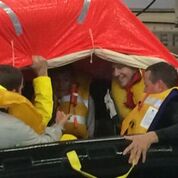
A life raft is cozy--cold and damp, too. (Chris Museler) - It takes a big hammer to make a wooden bung stick in a leaking seacock.
- A cordless angle grinder is way faster than a hacksaw for cutting rod rigging in case of a dismasting.
- Keep a fire extinguisher in the cockpit. A fire can prevent you from getting to the ones below.
- Practice POB rescues and setting storm sails. They won’t succeed on your first try.
- Flares burn very hot and bright. Hold them angled down and away from your body. Try not to look at them.
- When a life jacket inflates, it feels like it explodes and that can shock you a bit.
- A life raft is never comfortable, even in a warm pool.
- Know where everything is located. Will Keene of Edson Marine presented detailed boat maps showing the location of all safety equipment and outlining procedures.
All this got me thinking. “Do I need to go to those lengths for my cruising boat?” “Will my ride to Bermuda have everything we’ve talked about?”
Jesse Terry called the seminar a “gut check” that, he said, should help any sailor establish priorities. As he put it, “When you’re abandoning ship, do you think you have the time to read the directions on a flare?"
The last US Sailing-sanctioned safety seminar on the East Coast before the Newport Bermuda Race will be held on June 15 in Newport. For more information, CLICK HERE.
